Mazda CX-30 vs Nissan Ariya – Differences & prices compared
Compare performance, boot space, consumption and price in one view.
Find out now: which car is the better choice for you – Mazda CX-30 or Nissan Ariya?
The Mazda CX-30 (SUV) comes with a Petrol MHEV engine and Manuel or Automatic transmission. In comparison, the Nissan Ariya (SUV) features a Electric engine with Automatic transmission.
When it comes to boot capacity, the Mazda CX-30 offers 430 L, while the Nissan Ariya provides 468 L – depending on how much space you need. If you’re looking for more power, decide whether the 186 HP of the Mazda CX-30 or the 435 HP of the Nissan Ariya suits your needs better.
In terms of consumption, the values are 5.70 L per 100 km for the Mazda CX-30, and 17.70 kWh for the Nissan Ariya.
Price-wise, the Mazda CX-30 starts at 25200 £, while the Nissan Ariya is available from 37300 £. Compare all the details and find out which model fits your lifestyle best!
Mazda CX-30
The Mazda CX-30 effortlessly combines sleek design with a sense of adventure, making it an appealing choice for urban explorers and countryside enthusiasts alike. Inside, the cabin is thoughtfully designed, offering both comfort and cutting-edge technology to enhance the driving experience. Its performance on the road is agile, providing a smooth and engaging journey for drivers and passengers.
details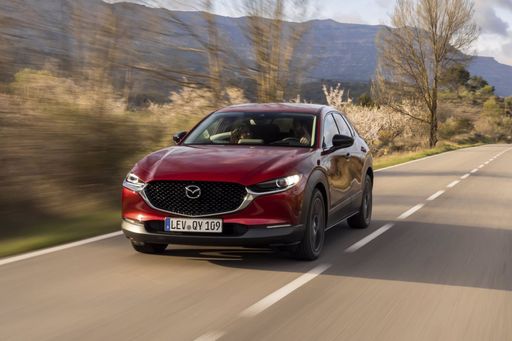 @ de.mazda-press.com
@ de.mazda-press.com
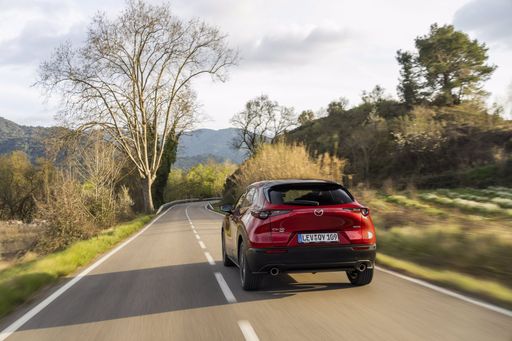 @ de.mazda-press.com
@ de.mazda-press.com
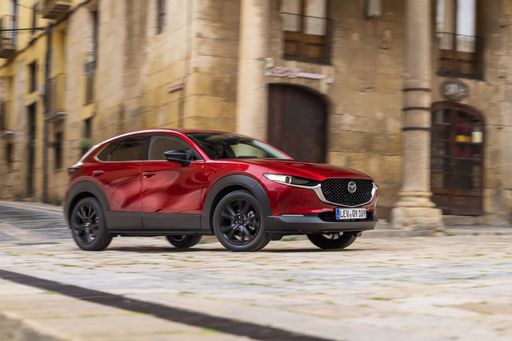 @ de.mazda-press.com
@ de.mazda-press.com
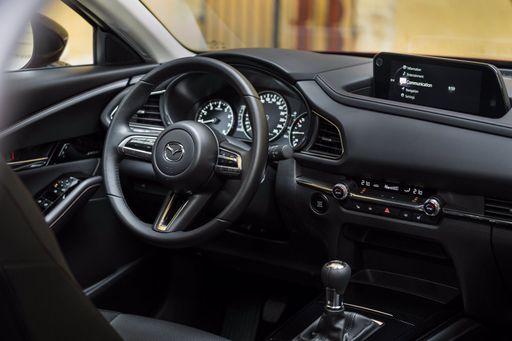 @ de.mazda-press.com
@ de.mazda-press.com
Nissan Ariya
The Nissan Ariya elevates the electric vehicle segment with its sleek design and advanced technology, providing a modern driving experience. Seamlessly blending comfort with performance, the Ariya offers an inviting and spacious interior that caters to both driver and passengers. Its innovative features make it a strong contender in the growing market for eco-friendly yet stylish automobiles.
details @ Nissan
@ Nissan
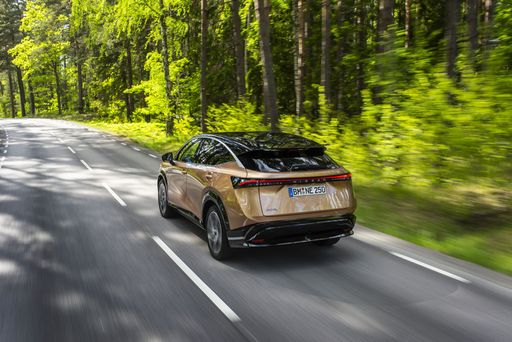 @ Nissan
@ Nissan
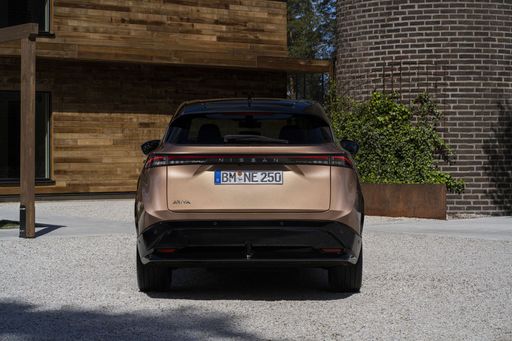 @ Nissan
@ Nissan
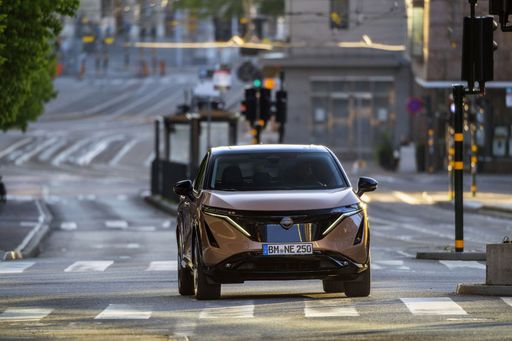 @ Nissan
@ Nissan
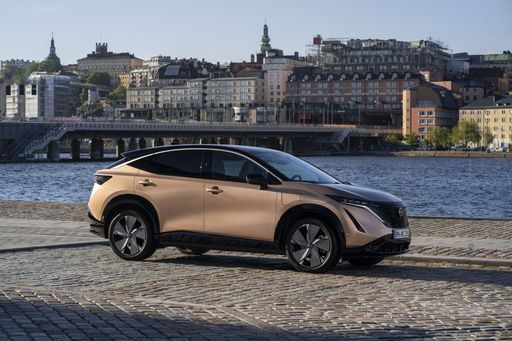 @ Nissan
@ Nissan
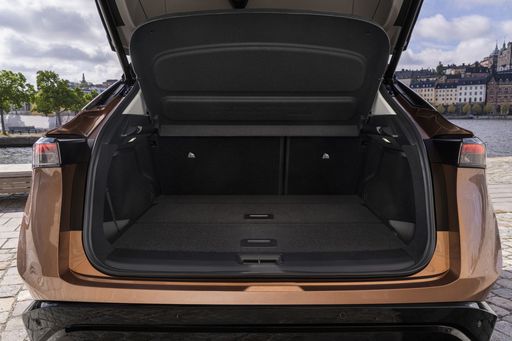 @ Nissan
@ Nissan
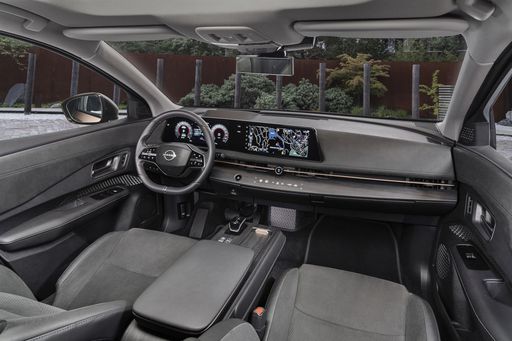 @ Nissan
@ Nissan

|

|
|
|
|
Costs and Consumption |
|
|---|---|
|
Price
25200 - 36800 £
|
Price
37300 - 54800 £
|
|
Consumption L/100km
5.7 - 6.6 L
|
Consumption L/100km
-
|
|
Consumption kWh/100km
-
|
Consumption kWh/100km
17.7 - 24.5 kWh
|
|
Electric Range
-
|
Electric Range
402 - 531 km
|
|
Battery Capacity
-
|
Battery Capacity
63 - 87 kWh
|
|
co2
129 - 148 g/km
|
co2
0 g/km
|
|
Fuel tank capacity
48 - 51 L
|
Fuel tank capacity
-
|
Dimensions and Body |
|
|---|---|
|
Body Type
SUV
|
Body Type
SUV
|
|
Seats
5
|
Seats
5
|
|
Doors
5
|
Doors
5
|
|
Curb weight
1455 - 1587 kg
|
Curb weight
1980 - 2259 kg
|
|
Trunk capacity
422 - 430 L
|
Trunk capacity
415 - 468 L
|
|
Length
4395 mm
|
Length
4595 mm
|
|
Width
1795 mm
|
Width
1850 mm
|
|
Height
1540 mm
|
Height
1650 mm
|
|
Payload
458 - 496 kg
|
Payload
396 - 420 kg
|
Engine and Performance |
|
|---|---|
|
Engine Type
Petrol MHEV
|
Engine Type
Electric
|
|
Transmission
Manuel, Automatic
|
Transmission
Automatic
|
|
Transmission Detail
Manual Gearbox, Automatic Gearbox
|
Transmission Detail
-
|
|
Drive Type
Front-Wheel Drive, All-Wheel Drive
|
Drive Type
Front-Wheel Drive, All-Wheel Drive
|
|
Power HP
140 - 186 HP
|
Power HP
218 - 435 HP
|
|
Acceleration 0-100km/h
8.3 - 10.3 s
|
Acceleration 0-100km/h
5 - 7.6 s
|
|
Max Speed
191 - 204 km/h
|
Max Speed
160 - 200 km/h
|
|
Torque
238 - 240 Nm
|
Torque
300 - 600 Nm
|
|
Number of Cylinders
4
|
Number of Cylinders
-
|
|
Power kW
103 - 137 kW
|
Power kW
160 - 320 kW
|
|
Engine capacity
1998 - 2488 cm3
|
Engine capacity
-
|
General |
|
|---|---|
|
Model Year
2025
|
Model Year
2022 - 2025
|
|
CO2 Efficiency Class
D, E
|
CO2 Efficiency Class
A
|
|
Brand
Mazda
|
Brand
Nissan
|
Mazda CX-30
The Mazda CX-30: Where Innovation Meets Efficiency
The Mazda CX-30 stands as a testament to Mazda's commitment to blending the best of technology and design. Positioned as a subcompact SUV, the CX-30 delivers the practicality of an SUV with the agile driving dynamics of a smaller vehicle. As we delve into its technical and innovative aspects, the CX-30 showcases why it's a formidable choice in today's competitive automotive market.
Engine and Performance: Power Meets Efficiency
The heart of the Mazda CX-30 lies in its sophisticated engine offerings. At its core, the e-SKYACTIV-X engines provide a unique balance of performance and fuel efficiency. With 186 PS at your disposal, these engines optimise the combustion process, reducing both fuel consumption and emissions. The engine's mild-hybrid system further enhances its efficiency by capturing energy during braking, making it one of the more environmentally conscious choices on the market.
Transmission and Drivetrain Options
Buyers have the flexibility to choose between a manual or an automatic transmission, catering to diverse driving preferences. The available all-wheel drive (AWD) system provides enhanced stability and control, particularly useful in variable weather conditions or challenging terrains. Those preferring a classic driving experience can opt for the front-wheel drive (FWD) variants, which still deliver impressive traction and handling.
Design and Dimensions
The Mazda CX-30's dimensions—4395 mm in length and 1795 mm in width—offer a spacious and comfortable interior while maintaining a sleek and modern exterior design. Its aerodynamic form not only enhances its aesthetic appeal but also contributes to improved performance and fuel efficiency. The interior, adorned with high-quality materials, reflects Mazda’s dedication to creating a premium driving experience.
Interior Comfort and Technology
Inside, the CX-30 does not disappoint. With a cabin that seats five comfortably, it strikes an excellent balance between style and practicality. The infotainment system, replete with intuitive controls and connectivity options, ensures that drivers remain connected and entertained on the go. Additionally, advanced safety features bolster the confidence of any journey, safeguarding occupants and pedestrians alike.
Pricing and Model Variants
The Mazda CX-30 is offered in a variety of model configurations, each catering to different budgetary and feature preferences. The entry-level models provide excellent value, while higher trims, such as the Exclusive-Line and Takumi, offer luxurious enhancements and additional technology features. With pricing from €28,940 to €42,390, the CX-30 positions itself as an attractive option in its segment.
Conclusion: The Ideal Mix of Performance and Practicality
In summary, the Mazda CX-30 emerges as a versatile and appealing option for those seeking a compact SUV that does not compromise on performance or sophisticated engineering. Its combination of innovative technology, efficient powertrains, and driver-centric features make it a worthy contender in its class. Whether navigating urban landscapes or exploring rural roads, the CX-30 delivers an engaging and reassuring drive.
Nissan Ariya
Unveiling the Nissan Ariya: Revolutionizing Electric Mobility
Nissan has taken a bold step into the electric future with the introduction of the Nissan Ariya, a sophisticated and stylish SUV designed to redefine the electric vehicle (EV) landscape. As the automotive industry evolves, the Ariya emerges as a frontrunner, blending cutting-edge technology and exquisite design to offer a unique driving experience. In this article, we delve into the technical specifications and innovative features that make the Ariya stand out in the electric vehicle market.
Striking Design Meets Practicality
The Nissan Ariya has a commanding presence on the road, thanks to its sleek and aerodynamic design, which is both functional and visually appealing. With dimensions of 4595 mm in length, 1850 mm in width, and 1650 mm in height, the Ariya maintains a robust stance while offering ample interior space. The five-door configuration and a trunk capacity of up to 468 liters ensure practicality for everyday use, whether it's a family outing or a shopping spree.
A Spectrum of Power and Performance
At the heart of the Ariya lies a versatile electric drivetrain that caters to various driving needs. The model is available in several configurations, with battery capacities of 63 kWh and 87 kWh, ensuring a balance between performance and range. The front-wheel-drive variants offer power outputs ranging from 218 HP to 242 HP, perfect for those looking for efficiency in urban settings. For enthusiasts seeking performance, the all-wheel-drive versions deliver up to 306 HP, while the Ariya Nismo tops the range with a thrilling 435 HP.
Advanced Battery Technology
The Ariya's advanced battery technology is engineered to provide long-lasting energy, with an electric range from 402 km to 531 km depending on the variant. The Ariya achieves this impressive range using a reduction gearbox and delivers efficient consumption ranging from 17.7 kWh to 24.5 kWh per 100 km. With a focus on sustainability, the Ariya boasts zero CO2 emissions, underscoring Nissan's commitment to a greener future.
Seamless Connectivity and Innovative Features
The interior of the Ariya is a blend of comfort and cutting-edge technology. Nissan has equipped the SUV with an intuitive infotainment system that integrates seamlessly with smartphones, offering features such as navigation, entertainment, and driver assistance technologies. The Ariya's cabin is designed for comfort, with ergonomic seating for up to five passengers. The vehicle's acceleration ranges from 5 to 7.6 seconds, ensuring a responsive and dynamic driving experience.
Safety and Assistance Redefined
Ensuring passenger safety, the Nissan Ariya is equipped with an array of driver assistance features, including adaptive cruise control, lane-keeping assistance, and an around-view monitor for enhanced visibility. These cutting-edge technologies work together to provide peace of mind for drivers and passengers alike, making every journey as safe and smooth as possible.
Conclusion: Driving into the Future
The Nissan Ariya represents a significant milestone in Nissan's electrification strategy, offering customers a blend of performance, innovation, and ecology. As the automotive world transitions towards sustainable solutions, the Ariya stands out as a testament to Nissan's dedication to pioneering the electric vehicle market. With ongoing advancements and its impressive suite of features, the Ariya is poised to redefine what drivers expect from an EV in terms of style, substance, and sustainability.
Which drive types are available for the Mazda CX-30?
Available as .
The prices and data displayed are estimates based on German list prices and may vary by country. This information is not legally binding.
